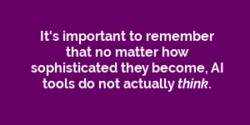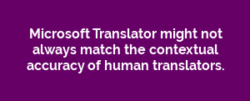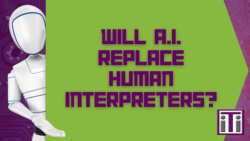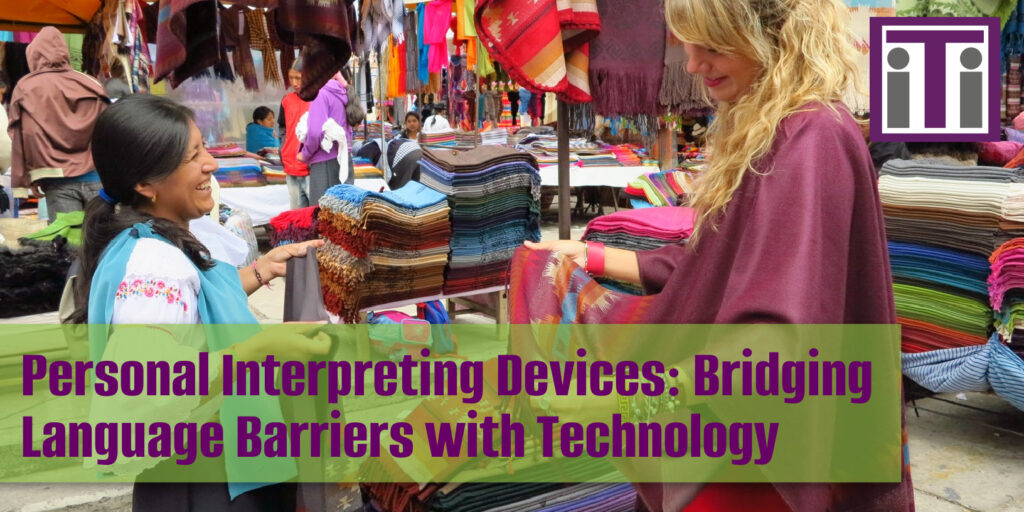Top A.I. Tools for Translation and Interpreting
Reading Time: ~6 mins

Since ChatGPT was released in November of 2022, the A.I. industry has experienced explosive growth. Toolify, a website that catalogs AI tools by category, has over 6900 listings as of the date of this post, and must actually use AI tools to keep up with the daily task of adding new sites.
As with the dot com boom of the late 90s, many of these new companies will likely not be around in a few years, although for different reasons. One is simple competition—many tools perform the same function, and only the best (and best funded) ones will survive. For example, Toolify lists 223 sites under the category “Email assistant.” A second is that larger companies will inevitably acquire the most promising tools and absorb them into larger platforms, a phenomenon that is already happening, with multi-billion dollar acquisitions being announced in virtually every news cycle.
Rage Against the Machine?
More and more, our clients are asking about the use of artificial intelligence in language services. As we stated in our August 8, 2023 article, A.I. and the Evolution of Language Services, AI solutions are tools, not replacements, for human linguists. 
It’s important to remember that no matter how sophisticated they become, AI tools do not actually think. This means that in the case that source material has any degree of ambiguity, AI will automatically use its “best guess” to determine the intended meaning. A professional human linguist will stop, research, ask questions, consult others, or whatever is needed to make sure that the translated or interpreted result conveys the message exactly as it was intended.
Top Translation AI Tools
Keeping in mind what we stated earlier about many of the current tools will likely disappear in the relatively near future, we chose these four tools because they have the most users, and are associated with companies that are unlikely to abandon them in the face of competition.
Google Translate
 Google Translate is a household name in the realm of instant translation services. As a product of the search engine giant, it offers an expansive suite of features, including the ability to translate over 100 languages. Google Translate is particularly user-friendly, with capabilities that range from translating written documents to real-time conversation translations and even translating text via your camera.
Google Translate is a household name in the realm of instant translation services. As a product of the search engine giant, it offers an expansive suite of features, including the ability to translate over 100 languages. Google Translate is particularly user-friendly, with capabilities that range from translating written documents to real-time conversation translations and even translating text via your camera.
However, the convenience of Google Translate comes with trade-offs. While it’s great for casual use or to get the gist of a text, it can sometimes lack the nuance and accuracy needed for professional translations. Its reliance on statistical machine translation can result in literal translations, which may not always grasp the context or cultural nuances of the language, making it less reliable for businesses that need precise and culturally sensitive translations.
DeepL
DeepL Translator has carved out a reputation for producing translations that feel natural and contextually aware, powered by its advanced deep learning technologies. Supporting 26 languages, DeepL offers features that appeal to the meticulous user, such as a glossary and dictionary for tailoring and understanding translations, and neural networks that adapt to the subtleties of language.
For professional translators, the quality of DeepL’s output can be a significant advantage. The cons, however, include a more limited range of languages compared to some of its competitors, which may restrict its applicability for global businesses. Moreover, despite its high-quality translations, it’s not immune to errors, especially with idiomatic expressions or very technical jargon.
Microsoft Translator
Microsoft Translator is a robust contender in the world of translation services, offering support for over 70 languages. Its integration with Microsoft’s suite of products, such as Office and Bing, makes it a convenient option for those already in the Microsoft ecosystem. Unique features like speech translation and text-to-speech cater to users needing accessibility options or those who work in verbal communication fields.
Multilingual conversation capabilities are a boon for international business meetings or customer support services. However, while it’s a powerful tool, Microsoft Translator might not always match the contextual accuracy of human translators or services like DeepL. Additionally, the interface and integration with certain products can be less intuitive for those not familiar with Microsoft’s platforms, potentially steepening the learning curve.
Amazon Translate
Amazon Translate is a relative newcomer to the AI translation market, but it has quickly made its mark, supporting over 70 languages and a range of features tailored for businesses. Real-time translation and batch processing are standout features for companies that require quick turnarounds or have large volumes of content. Custom terminology is another plus, allowing for greater control over brand-specific language or industry jargon.
As part of the Amazon Web Services (AWS) suite, it’s well-suited for companies that need to integrate translation into their existing cloud infrastructure. The downside is that while Amazon Translate is powerful, it may not be as accessible for individual users or smaller businesses due to its pricing and technical setup. Moreover, it may not always capture the linguistic finesse required for literary or highly specialized texts, an area where human translators excel.
Interpreting with AI
Interpreting is a complex and challenging task that requires not only linguistic skills, but also cultural awareness, interpersonal skills, and quick thinking. While there are many AI tools that can perform translation, we were unable to find any AI tools exclusively designed for interpreting. Searching Toolify’s list of 6958 AI tools for the word “interpreting” brings back zero results, while “translation” returns 77.
Some of the leading AI tools for translation also include a speech-to-text component, which can convert spoken language into written text, which can then be translated and converted back into speech. This can be useful for situations where a human interpreter is not available, or where a written record of the conversation is needed. However, speech-to-text technology is not perfect, and it may not capture the nuances, emotions, and intentions of the speakers. Therefore, human interpreters are still essential for ensuring accurate and effective communication across languages and cultures.
For more on this, see our June 2023 article Will A.I. Replace Human Interpreters?
Interpreters and Translators, Inc. is a full-service language solutions company, working with over 10,000 expert linguists in more than 250 language. iTi is an NMSDC-certified minority-owned business.
| Get in Touch |






